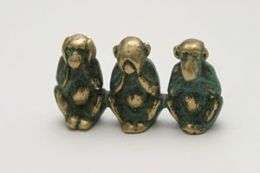October 29, 2007 weblog
The Next Level in Robots: Monkey See, Monkey Do, Monkey Create

The next level of robot is currently in the research and development stage in Japan's National Institute of Information and Communication Technology. The next level of robot untethered by human omnipresence allows it to take cues from gestures and make immediate and appropriate responses.
The Japanese, National Institute of Information and Communications Technology is working on a project wherein machines can learn and teach themselves what to do. Presently, robots are tethered to human commands or guided by programs in advance that operate in real time. The new level of robot will take cues from gestures and operate more autonomously through a learning process.
The Institutes's Spoken Language Division is in the development stage of creating a robot that measure 155 cm and weighs 85 kg that learns through gestures, thereby creating a more autonomous robot. The Spoken Language Group´s main focus is to develop an information communication system that understands when people talk correctly and automatically takes appropriate actions to people and other machines. The actions are based on the knowledge they receive from the talk by people in their presence.
According to the Institute, the current research is involved in producing stress-free unambiguous communication that a machine understands immediately and tells its understanding immediately to a person or another machine. Its primary goal is to establish a technology to give messages to network terminals by people's natural expressions, such as gestures, hand signals and body language that transcend language differences and allow for approximations.
As of this writing, the prototype of this next level of robot has not made its public debut. There are reports of its development. According to Digital World Tokyo, the work in progress robot can understand the gesture of pointing a finger at an object. It can possibly understand the traditional Japanese bow indicating a respectful greeting.
In addition, the new robot can repeat the same gestures in the appropriate circumstances. Specifically it can pointing out a direction and then move in that direction. This indicates the robot has formed its own learning process without being programmed to do so or by a formal teaching command.





















